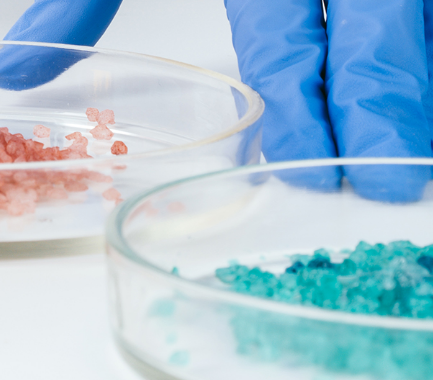Your contact
PENPET-Team - Hamburg

Tim Meister
Sales
Tel. +49 (0) 40 - 675 7 99 40
sales@penpet.de
Get in touch with us.
Fumaric acid
Fumaric acid is an unsaturated dicarboxylic acid, also known in the scientific literature as trans-butenedioic acid and trans-ethylenedicarboxylic acid. It is used in the food industry, animal feed production, the cosmetics industry, pharmaceutical production and as a raw material in polyester production. For industrial use, the compound is obtained from the isomeric maleic acid by UV irradiation, heating or by catalysis in aqueous solution. Natural occurrences of the acid include fungi, plants and lichens. It is contained, among other things, in plant parts of the common fumitory, its name being derived from the Latin Fumaria officinalis.
Fumaric acid is used in various fields of application. In the chemical industry, the acid is used as a starting material for the production of polyester resins and for the manufacture of alditols. As a food additive E 297, fumaric acid is an important acidifier. The pharmaceutical industry mainly uses the compound as a carrier medium to administer active ingredients in the form of fumaric acid salts. Esters of the substance such as monoethyl fumarate and dimethyl fumarate are used to treat multiple sclerosis and psoriasis. In addition, the acid is used as an additive in feed production to stabilize the pH value in the digestive tract and prevent infections.
At PENPET you can reliable order the required amount of fumaric acid. We look forward to receiving your inquiry for an individual offer. The solids are delivered in 25 kg sacks and 500 kg or 1,000 kg big bags.
CAS no. 110-17-8
EINECS no. 203-743-0
Molecular formula: C4H4O4
Synonyms: trans-ethylenedicarboxylic acid, trans-butenedioic acid, (E)-butenedioic acid, fumaric acid, E 297
Areas of application: Raw material for the production of polyester resins and alditols, component of lubricants, paints, paper glue and adhesives, use as acidulant, feed additive and mordant, use in pharmaceutical and cosmetic applications
More Information
Fumaric acid is a dibasic carboxylic acid, the structure of which is made clear by the synonym trans-butenedioic acid. The compound consists of a butene structure with a central double bond and two terminal carboxylic acid groups, the arrangement of which is mirror-symmetrical with respect to the double bond. Because of these two functional groups, fumaric acid has a high reactivity and can undergo polymerizations together with suitable reaction partners. For example, the substance can form long chain polyesters with dihydric alcohols. The double bond in the center of the molecule represents another reactive site and is suitable for, among other things, converting the acid in the course of addition reactions.
The compound is an isomer of maleic acid, which is also known as cis-butenedioic acid and differs from fumaric acid only in the spatial arrangement of its components, since their carboxylic acid groups are on the same side of the double bond.
Fumaric acid is a colorless to white solid that is in the form of a crystalline powder. The compound is odorless, its taste is described as tart and sour to fruity. The acid is hardly hygroscopic and absorbs almost no moisture. When heated, it does not go into a melt, but sublimes directly into the gaseous state at a temperature of 200 °C. Fumaric acid is poorly soluble in water. However, it is readily soluble in some organic solvents such as ethanol and concentrated sulfuric acid. The compound is acidic and has a pH of 2.1 in aqueous solution.
Fumaric acid is chemically stable at room temperature. However, dry and airtight storage is necessary, as dangerous reactions can occur if the substance comes into contact with bases, reducing agents, strong oxidizing agents and amines.
The compound is combustible, but in its pure form it is difficult to ignite. However, if dusts of the fine powder are swirled, an easily ignitable and explosive mixture with the surrounding air can form. Fumaric acid should therefore be kept away from sparks, open flames, electrostatic discharge, hot surfaces and other sources of ignition. Greater caution is required when handling open containers of the substance.
Fumaric acid is considered to be hardly toxic and already occurs in the human body as a normal metabolic product. However, long-term intake of high doses of the acid is suspected to have a damaging effect on kidneys. Contact with compound dust may be irritating to eyes, mucous membranes and skin. Affected parts of the body should be rinsed with plenty of water to dilute and remove acid residues. After oral ingestion, temporary gastrointestinal symptoms may occur. If the substance is accidentally swallowed, rinse the mouth out with water and then drink water. Medical treatment should also be arranged.
The compound is categorized as slightly hazardous to water. The release of fumaric acid into the soil, drains or open water must therefore be prevented. In addition, any leakage of the substance into the environment must be reported to the responsible authorities. The connection is not subject to any special transport regulations.
